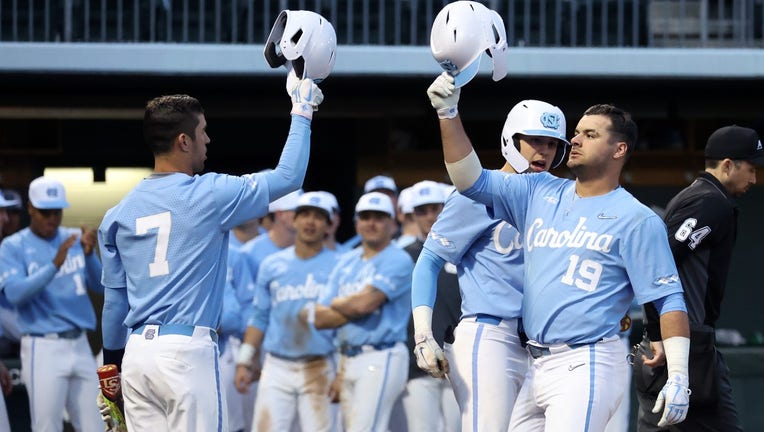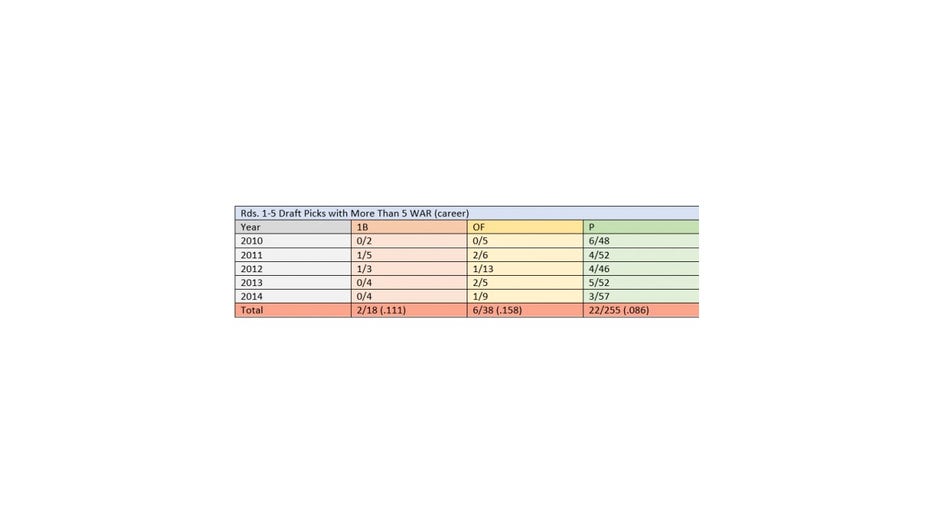Can college bats succeed for Twins over arms?

Aaron Sabato #19 of the University of North Carolina celebrates his home run with teammate Dallas Tessar #7 during a game between High Point and North Carolina at Boshamer Stadium on February 19, 2020 in Chapel Hill, North Carolina. ((Photo by Andy Mead/ISI Photos/Getty Images))
MINNEAPOLIS - Originally published on TwinsDaily.com
There were plenty of college arms available in the 2020 draft and plenty of Twins fans were clamoring for the Twins to go all in on college pitchers. Minnesota’s brain trust presumably believes that college bats have a better chance of succeeding than college arms. But is it so?
Derek Falvey was well renown for developing pitching in his time in Cleveland, but since taking over for Minnesota he has shown a strong preference for college bat-first players when picking later in the first round.
The Twins have selected Brent Rooker, Trevor Larnach, Matt Wallner, and most recently Aaron Sabato and Alerick Soularie all before pick number 60 (and catcher Ryan Jeffers could be thrown into the mix as well). With only four picks in this year’s five-round affair, Minnesota went with three bats and one high school arm but have begun the process of picking up additional college arms in the form of undrafted free agents.
With the Twins making great strides in player development and the use of technology this approach makes some sense. After all, there’s more than one way to skin a cat – the important thing is that the cat gets skinned (have you ever tried chewing cat skin?) Minnesota can target less heralded pitchers in the later rounds (or free agency in this year’s case) and make good use of their developmental skills while continuing to obtain arms they covet in trades (Jhoan Duran, Chris Vallimont, etc.), and can also use the surplus of hitting prospects to obtain mlb-ready pitching.
And that’s fine, but for it to work out two things need to happen. First, the hitters need to develop (so far, so good) and second, teams willing to trade pitching to the Twins need to covet Minnesota’s bats. There’s plenty of ways to work out a trade including trading away MLB talent if Minnesota is confident in the younger replacements, but are college hitters really that much more likely to succeed than college pitchers?
In an admittedly quick and limited attempt to answer that question I have searched Baseball Reference’s draft index and combed through the first five rounds of the 2010-14 drafts to compare college pitchers and bat-first college position players. I chose those five years because they’re fairly recent while giving the players adequate time to reach the majors, and five rounds because it was the length of this year’s draft.
To get as bat-first as possible I tried to stick to corner outfielders (cutting out center field only players) and first baseman. The sample size of pitchers is much larger than hitters, as significantly more pitchers are drafted each year (at least than corner OF/1B bats).
In sticking with our theme of fives, we’ll look at the percentage of players from each category that have reached five bWAR so far in their careers. This isn’t perfect, as 2014 players have obviously had less time to reach five WAR than 2010 players, but it does give us a cutoff point and some evidence of success at the MLB level.
Here's the results:

While the sample size is much too small to responsibly jump to any sweeping conclusions (other than that the draft truly is a crapshoot), we can see that college pitchers have been somewhat less successful than bat-first hitters so maybe Falvey and Co. are on to something. It’s also worth pointing out that most of the big-name pitchers (Chris Sale, Gerrit Cole, Trevor Bauer, Sonny Gray, and Aaron Nola) came earlier in the first round than where the Twins have been taking their college bats (but OF Aaron Judge was the 32nd pick of the 2013 draft!) with much less pitcher success coming later in the first round.
I’ll go ahead and drink the Kool-aide in part because I find myself in agreement with pretty much everything Derek Falvey and Thad Levine do, and in part because I haven’t tasted Kool-aide for at least a few decades.

